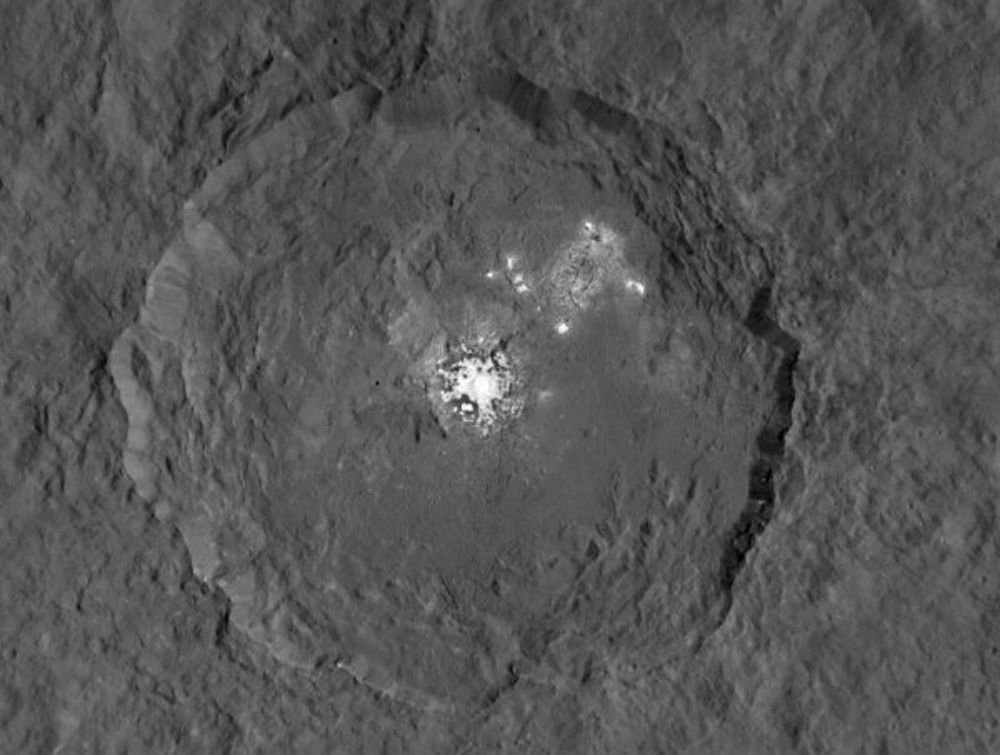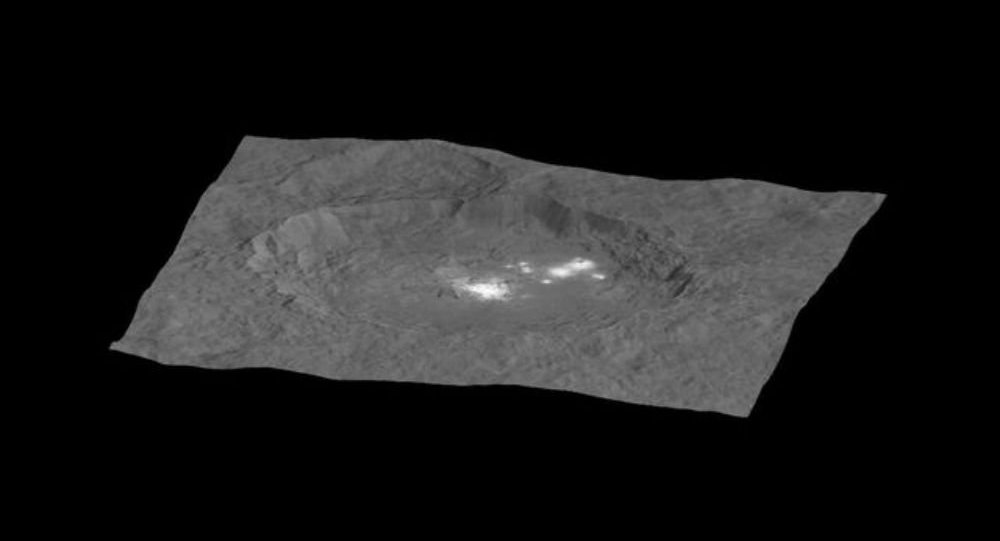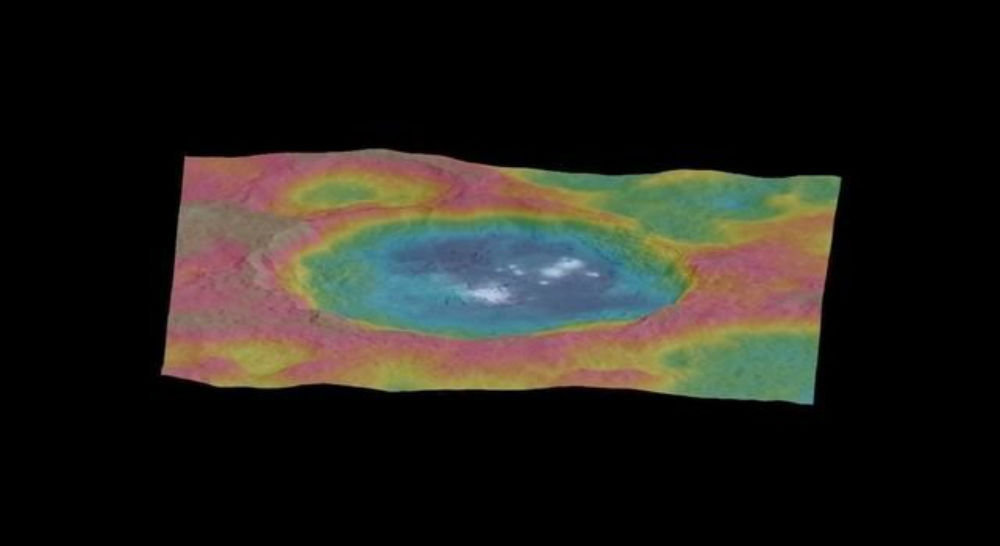
But exactly what is causing the spots to be so bright is still a perplexing unknown. With a higher resolution, the lights inside the crater have become more defined, but it's not yet clear what the features even are.
Photographs taken to create the topographic animation of the crater used two components: surface imaging during Dawn's High Altitude Mapping Orbit (HAMO), and modeling using images taken from several different angles to create an elevation map. This allowed scientists to determine that the difference in elevation from the lowermost parts of Occator in blue are four miles lower than surrounding features.
By December, the Dawn orbiter is to be lowered to an altitude of 225 miles above Ceres, which would put the orbit inside that of Earth's orbiting International Space Station. Whether they turn out to be volcanic activity, salt deposits or evidence of extraterrestrial life, it appears we will have to continue patiently waiting until then for more conclusive answers for the bright spots.





What could be the source of an active volcano on Ceres?